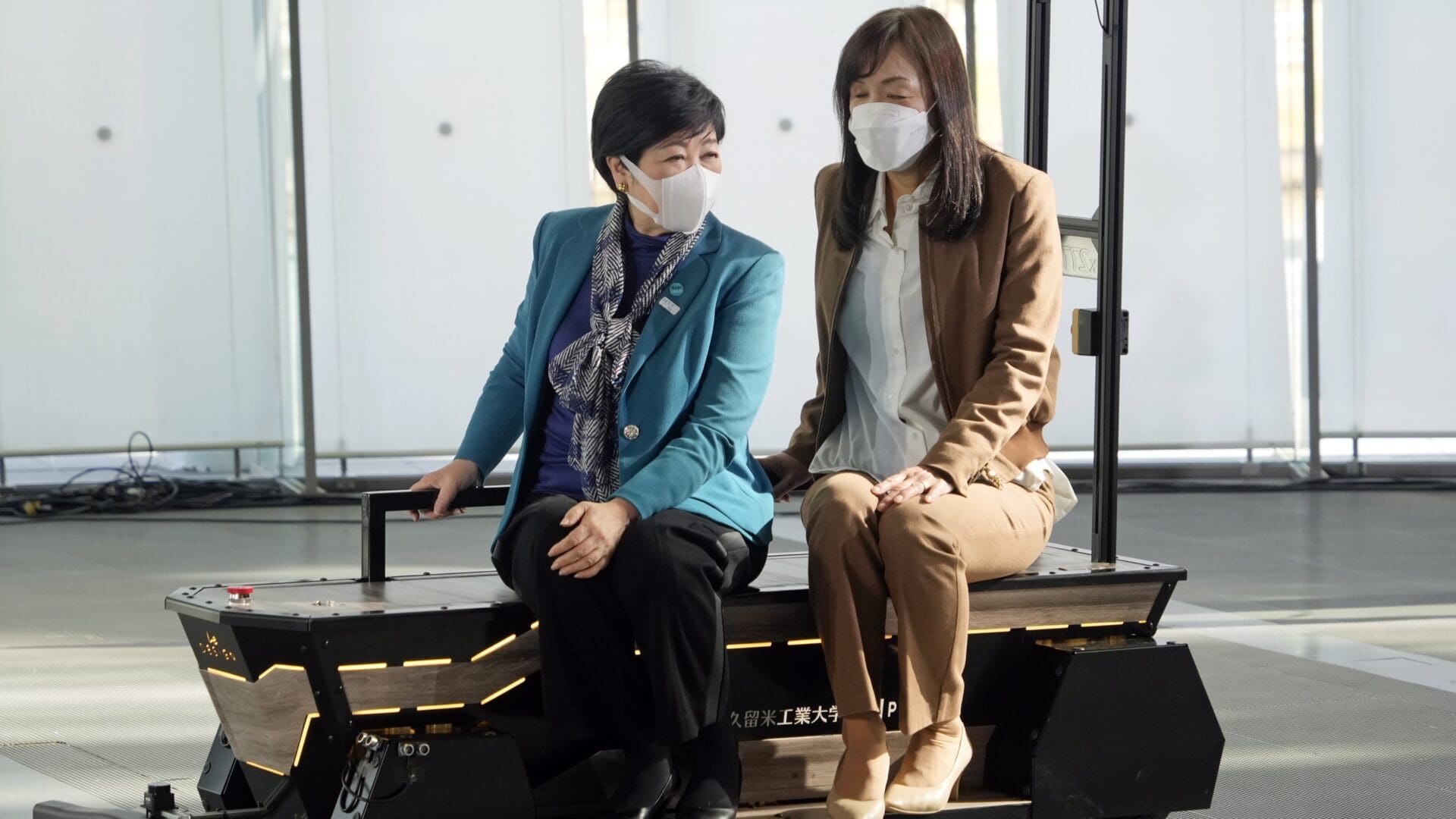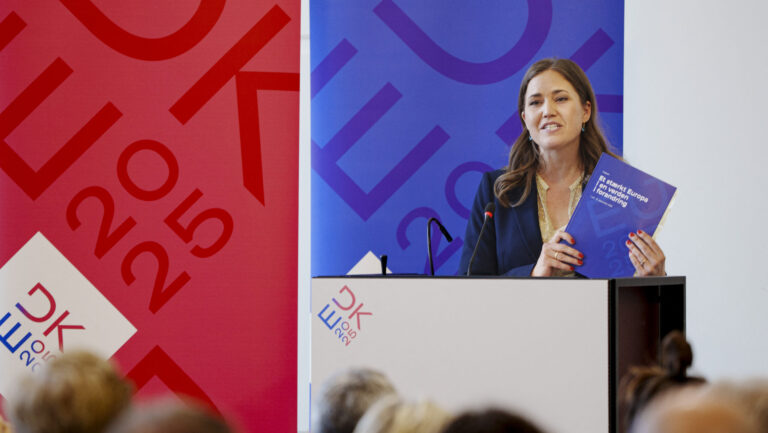Japan has resolved to tackle the glooming demography issues that threatens the country’s future if not properly addressed. Japan’s prime minister put the low birth rate as top issue in his address at the opening of the Diet session. We may see bold policies such as the ones already introduced in Hungary. The launch of a new Child and Family Agency, raising the baby bonus to 500,000 yen to cover the expenses of childbirth, tax breaks for families and other financial support including a plan of another hundred thousand yen to help covering the initial costs of starting a family, and previously introduced measures like making IVF treatment free for couples all point in that direction. Whether financial measures will be enough to overturn the tragic demographic trend is another question.
In his opening address at the starting day of the regular session of the Japanese Diet, which is traditionally a tone-setting major policy speech by the prime minister, Kishida Fumio touched upon many issues that are in the centre of discourse in Japan: defence, security and foreign policy, the G7 presidency, and green transformation. But the subject that was at the core of his speech was the decreasing population of Japan. As Kishida said, the low birth rate puts Japan ‘on the brink of being unable to maintain social functions’, i.e. if the present demographic trends continue, Japanese society will collapse and the state will not be able to perform its main functions. Speaking of social sustainability and inclusiveness, Kishida stressed he wants to place child-rearing support at the top of his government’s agenda.
Kishida remained vague on policy details, but he said he would present an outline by June for a future doubling of the childcare budget.
He announced that in April a new government body called the Children and Family Agency will be set up and start operating,
taking over the coordination of child and family support policies.
Low birth-rates and decreasing populations are not new problems in Japan or in other East Asian countries, most remarkably in South Korea or China. But this year, the situation has started turning really tragic in Japan. In 2022, first time in modern history, the number of births fell below 800,000. The population that peaked in 2009 at 128 million is now estimated at 124.77 million, and according to demographic models, if the trends stay, it could fall below 100 million by 2058. Currently, 29 per cent, roughly one-third of Japan’s population is 65 years old or older, while only 11.6 per cent are aged 0–14. Japan is becoming a so-called ‘silver society’, where a very significant part of the people is aged, mostly inactive and lives off the social system. Fewer and fewer births not only mean a smaller population, but also a shrinking labour force and bigger pressure on the social security system that has to support the ‘silver’ population, and ultimately a weaker country. Japan has been running the same course as China: for long in history, overpopulation was the issue and a falling birth-rate was welcome. After the war the challenge was to feed a huge population in an impoverished country where millions were repatriated from former colonies. The birth control pill was legalised, and abortion is not a political issue in Japan as compared for example to the United States.
And the future doesn’t look bright either.
While last year’s tragic number is largely attributable to the effect of the Covid restrictions and insecurity about the pandemic, one of the fundamental reasons behind the collapse of the birth-rate in Japan is the deterioration of the institution of marriage. According to a fresh study, only one in seven young Japanese women think that they will definitely get married. More and more Japanese women postpone or completely give up on marriage, while the median age at which women get married is continuously growing. As of 2020, according to government statistics, 23.6 per cent of Japanese women between 35 and 39 had never been married, compared to just 10 per cent in 1995, though it is well known that children are more likely to be born out of a wedlock than from an uncommitted relationship. Marriages also fell to a record low during the Covid pandemic, and their number has been steadily decreasing since the early 2000s, while the average age of couples is growing.
In post-war Japan, as the country got richer, women tended to have fewer and fewer kids. It may sound paradoxical, but the increasing income also meant more capital to invest in the children’s future. Providing stable future for the child means investing in their education that enables them to get into the desired university that can land them in a stable job. Education is very competitive: cram schools, ‘juku’ in Japanese, are spread all over Japan, where teenage school kids spend their evenings and often weekends as well. A total of 61.1 per cent of people in Japan believe it is hard to raise children in the country according to a government survey and the reason is partly the costs involved.
Another big obstacle in Japan is that having a child is financial in nature.
When a woman gets pregnant, she is aware that it will cost her a lot directly and indirectly.
Just the cost of giving birth can reach into the millions and the mother can only hope there would be no complications, as those may add to the final bill. Raising a child in Japan from birth to graduation can cost as much as 63 million yen. The cost of raising a child is significantly higher if the child attends private schools instead of public ones.
A further economic factor is that in Japan the choice between being a mother and following a career is often incompatible. Tachibana Akira, in his book Full-time Homemakers are Losing 200 Million Yen calculated a huge earnings loss incurred by Japanese women having a long period of career interruption due to choosing motherhood over work. For centuries, the societal norm was that women stayed at home, managed households, were responsible for the children’s education while the husbands worked from morning until late. As the population and the labour force shrank, more and more women joined the labour market, a phenomenon often labelled as ‘womenomics’, in reference to the famous ‘Abenomics’. While the phenomenon is often sold as a success story, as Richard Katz, renowned Japanese economy watcher points out, ‘it is little different from the experience in most rich countries: when men suffer from wage austerity, more wives join the labour force to maintain family incomes.’ During the Abenomics years, 75 per cent of the growth in female employment was in low-paying, non-regular jobs. Japanese workplace and corporate culture don’t help either. Even in the public sector, the overwork culture is extreme. According to a recent Nikkei report, bureaucrats in different ministries spent on average seven hours a day during the last Diet session preparing minister statements and other documents. In the worst case, they finished at 3 a.m. in the morning. Not a supportive environment for a woman who would like to align her career with raising children in a country where married women are not even allowed to freely choose their own name. Married couples are required by law to have the same surname, a rule often called ‘traditional’ by conservatives, but in fact only 120 years old and imported from Europe in the Meiji era.
The result is that the fertility rate has been steadily decreasing in Japan ever since the 1970s,
and although there was a modest recovery in the 2010s from the lowest point at 1.26, it is now under 1.4, well below replacement level.
Luckily, Japan and Japanese society haven’t yet succumbed to Malthusian doomsday theories and climate extremists who see a positive thing in a decreasing population to “save the planet’, at least it is not a credible narrative around there. But it is one thing to understand that falling population is now the biggest problem, and another if Japan can do anything about it. Not everyone is convinced. In fact, there are narratives that say that the economy, the social security and transport systems and infrastructure should be adapted to serve a greying population: introducing robots in healthcare, self-driving buses in rural areas as there would be no drivers, robotising jobs, and switching to a wide use of artificial intelligence. Not to mention another conundrum: whether there will be enough women in Japan to give birth to achieve a demographic turnaround.
The Western European, or ‘liberal’ solution of mass immigration, especially what we saw in Europe in 2015 when that time German chancellor Merkel opened the country to uncontrolled mass immigration, is not a viable option for Japan or other East Asian nations. Japan, though a dream destination for many, especially in Southeast Asia, to live and work there, has never been a traditional immigration nation and until the war in Ukraine, was regularly criticised for not receiving enough refugees either. Nonetheless, there is a significant and growing influx of foreigners to Japan, and the Japanese government just recently eased the rules for quality immigration, welcoming skilled professionals and graduates of top universities. At the same time, there are record numbers of Japanese every year, over half a million in 2022, who choose to permanently live abroad, reaching a total of 1.3 million recently, which is a clear sign of globalisation.
Despite all of these phenomena, Japan, an island country, has remained a predominantly homogenous society,
where safety, stability and social order largely rests on society’s willingness to follow norms. There are no parallel societies or no-go zones and as the famous Japanese proverb says: the nail that sticks out gets hammered down.
If mass immigration, fortunately, is out of the question, the only way to solve the problem is to encourage Japanese women to have more babies. But will pouring government money be enough to solve the problem? There is a fear that just by handing out cash will not change the big picture, as it will only lead to spending more money on the same number of children, and their better and more education. The monthly five thousand extra allowance per child announced by the Tokyo government will not be a trend changer either. Hungary’s example shows that spending big money is not enough alone, how it is spent also matters. In Hungary births started falling shortly after 1990, when the switch to market economy brought insecurity along with economic and political freedom. The total fertility rate hit rock bottom in 2011, the year after the collapse of the disastrous rule of the Socialist governments, reaching as low as 1.23. The conservative government assuming power after a landslide election victory in 2010 made child and family policy a top item of their governing agenda. Tax breaks after children was the first measure, including granting Hungarian women with four children or more lifelong exemption from paying income tax. In 2016, the Family Housing Allowance Programme was introduced, whereby young married couples can get interest-free loans of 10m forints (about $36,000), to be cancelled once they have three children. IVF treatment became free in 2020 in Hungary, a measure also introduced the same year by the Suga government in Japan.
The robust measures initiated by Hungary didn’t immediately bring about a rapid growth in births, but it did induce a surge in marriages,
as young couples were incentivised by the state to make their relationships official. Although short of a baby boom, the new measures proved to be trend-changing, and the fertility rate started to climb back, becoming higher every year, reaching 1.59 in 2021. This is still below the level of 2.1 required to keep population in balance, but the positive tendency is visible. And though with a raging in the neighbourhood, and in the midst of an energy crisis and soaring inflation, two-thirds of young Hungarian couples may have a positive outlook on 2023. A wide range of family support measures means that having children doesn’t result in poverty according to a recent study conducted by the Mária Kopp Institute for Demography and Families.
Can Kishida and his planned family policy plans bring this optimism to Japan, too? It won’t be easy after three years of Covid depression that is said to be one important underlying factor behind the record low births (around 800,000) recorded in 2021 and 2022. Comparing these numbers to the last pre-Covid year, 2019 with around 865 thousand live births, the fallout during Covid years largely exceeds the officially registered Covid deaths that stand now at 70 thousand. Were all the restrictions worth it? A rhetorical question, such as the one asking how will young Japanese start having more children when they have been instructed to exercise physical distancing and cover their faces for the past three years?
But the more imminent question, one that always lingers in Japanese politics, is how long the prime minister will stay in power. Kishida’s support rate is constantly low, in the thirties, close do the so-called death zone, which starts below 30 per cent. There is doubt also about how the increased family support will be financed. While almost two-thirds, 62.9 per cent regard Kishida’s plans to address the plunging birth-rate as appropriate, about the same share, 63.6 per cent disapprove of any increased burden to finance his policies, including a potential hike in the consumption tax, according to the most recent poll by Kyodo News Agency. The same poll found that 78 per cent of respondents would prefer an election before any tax raise. Although Kishida should be theoretically safe until autumn next year, when his term on top of the ruling party expires, given the harsh and often chaotic dynamics of party politics in Japan, nobody, including Kishida himself, can be dead sure his party would want to run at a snap election with him at the helm.
Whether Kishida stays longer than the G7 presidency or not, let’s hope the focus remains on tackling the decrease in population and creating an environment more favourable for women, children, and families. Throughout history, Japan, a successful country, has showed strength and resilience overcoming challenges and changing course when necessary. As by May Covid will be reclassified and put into the same category as the common influenza, let’s hope more attention will continue to be paid to youth and family policy.








